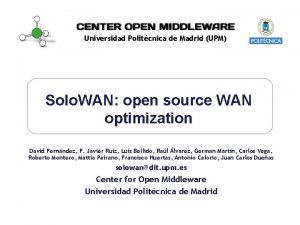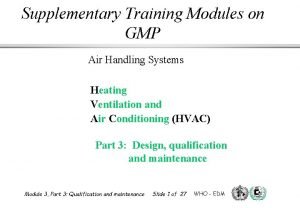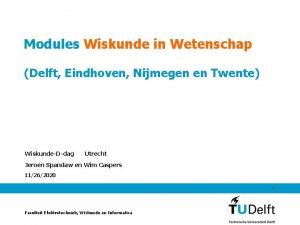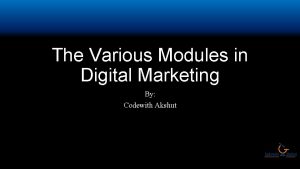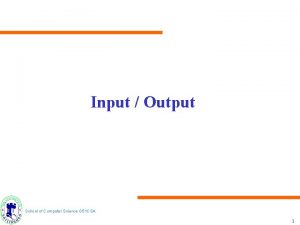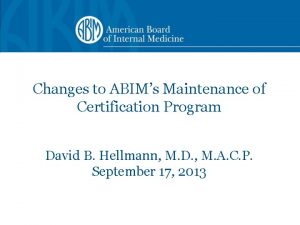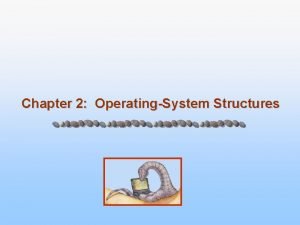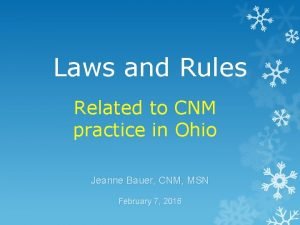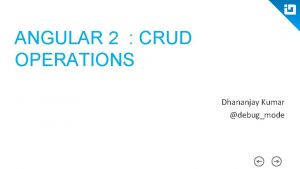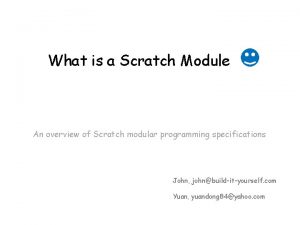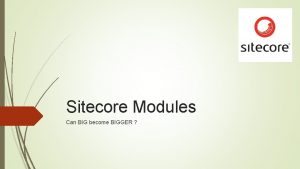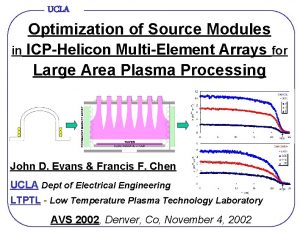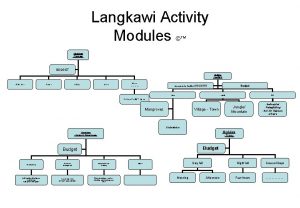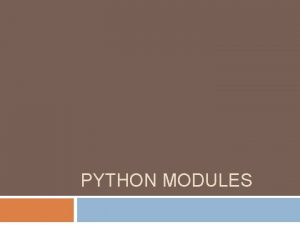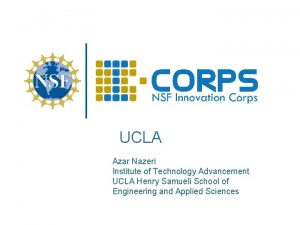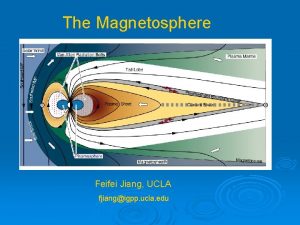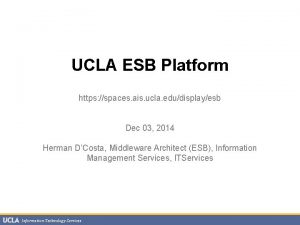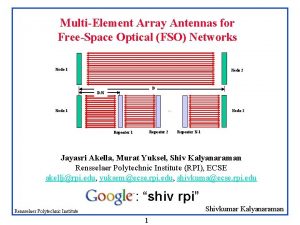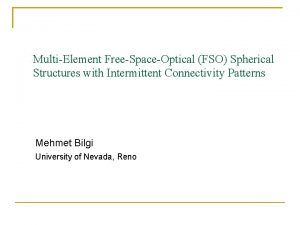UCLA Optimization of Source Modules in ICPHelicon MultiElement






















- Slides: 22

UCLA Optimization of Source Modules in ICP-Helicon Multi-Element Arrays for Large Area Plasma Processing John D. Evans & Francis F. Chen UCLA Dept of Electrical Engineering LTPTL - Low Temperature Plasma Technology Laboratory AVS 2002, Denver, Co, November 4, 2002

UCLA Conceptual multitube m=0 helicon source for large area processing

UCLA One-tube configuration using large-area Bo-field coils and radially scannable Langmuir probes COIL Single source tube with individual solenoidal Bo

UCLA Schematic proof of low-field Helicon mode; RH-t-III antenna Helicity pitch sense B up (down) launches m=+1 up (down) Np and VL enhanced in region that m=+1 mode propagates towards m = -1 B m = +1 m = -1

UCLA Experimental evidence: Half-helical antennas launch m = +1 Helicon mode from source tube when “low field peak” is present. Dependence of N(B) on the direction of B reverses when RH 1/2 -helical antenna the sense of the helicity of the antenna is reversed; thus it is m = +1 helicon mode Sense of helicity “LH” “RH” LH 1/2 -helical antenna

UCLA Verification of Low-field Helicon Excitation Low-field “peak” in N vs B plot Dependence of occurrence of peak on B-field direction Dependence of N vs B on B-direction reverses with antenna helicity

UCLA Low-field peak increases, broadens and shifts to higher B at higher Po.

UCLA Left Hand (LH) Helical Antenna Nomenclature Defined Lant = Physical length of active antenna element lant = Antenna Wavelength - pitch of helical straps Half Helix l

UCLA Radial Np profiles for 3 RH-helical antennas 1 k. W, 13. 56 MHz, 15 m. T Ar, 150 G, z=3 cm, next slide Same antenna length, but different “antenna wavelengths” Top: double-helix; Middle: full-helix; Bottom: half-helix Wider profiles observed in “B-down” configuration in all cases Most total downstream Np produced in full-helix case More total downstream Np produced in “B-down” case m=1 helicon mode enhances profile width as well as Np

UCLA Radial Np profiles for 3 “antenna wavelengths”

UCLA Radial Np profiles for 3 RH-helical antennas 1 k. W, 13. 56 MHz, 15 m. T Ar, 150 G, z=3 cm, next slide Same antenna length, but different “antenna wavelengths” Top: double-helix; Middle: full-helix; Bottom: half-helix Wider profiles observed in “B-down” configuration in all cases Most total downstream Np produced in full-helix case More total downstream Np produced in “B-down” case m=1 helicon mode enhances profile width as well as Np

UCLA 1 k. W, 15 m. T, 150 G Half-helical m = +1 antenna Lant = 10 cm, lant = 20 cm Langmuir Probe @ z = 3 cm below mouth of source tube

l UCLA Full-helical m = +1 antenna Lant = 10 cm, lant = 10 cm Langmuir Probe @ z = 3 cm below mouth of source tube

UCLA Double-helical m = +1 antenna Lant = 10 cm, lant = 5 cm Langmuir Probe @ z = 3 cm below mouth of source tube

UCLA 1 k. W, 10 m. T Ar, 13. 56 MHz, Lant =10 cm = lant, z=3 cm, 150 G l

UCLA M = 0 radial profiles 4 equispaced source tubes, Enough for uniform plasma? YES, for axial distance z > 10 cm from source tubes

UCLA Schematic of multi-turn loop “m=0” source element Pyrex antenna

UCLA Numerical label convention: 7 tube source, aerial view “w, x, y, z” = Antennas # W, X, Y, Z “ON”, others “OFF” “ 1, 2, 4, 5” “ 1, 2, 4, 6” 3 2 1 7 3 4 5 6 2 4 1 7 5 6

UCLA “ 1, 2, 4, 5” 3 4 2 1 5 7 6 “ 1, 2, 4, 6” 3 4 2 1 5 7 6

UCLA Np radial nonuniformity vs axial distance z from source tubes “ 1, 2, 4, 5” 3 2 4 1 7 5 6 Broad/flat cannot be explained by streaming of plasma along B-lines and normal diffusion

UCLA N(R) vs Z for 3 -turn loops, 4 symmetric (1, 2, 4, 6)

UCLA CONCLUSIONS 4 equispaced source tubes good enough, due to Helicon-enhanced uniformity Multitube concept appears to be applicable to arbitrarily large area.
 Multielement design
Multielement design Open source wan optimization
Open source wan optimization Army resilience training slides
Army resilience training slides Air handling unit system
Air handling unit system Modules wiskunde
Modules wiskunde Various modules in digital marketing
Various modules in digital marketing Nexus 5010 layer 3
Nexus 5010 layer 3 Psychology tenth edition david g myers
Psychology tenth edition david g myers Enterprise business systems
Enterprise business systems Modules for library management system
Modules for library management system A set of i/o modules is a key element of a computer system
A set of i/o modules is a key element of a computer system Acp moc modules
Acp moc modules Api in operating system
Api in operating system Pltw summer training 2017
Pltw summer training 2017 üwww
üwww Amcb modules
Amcb modules Gifmis pfm
Gifmis pfm Siyb gateway
Siyb gateway Glycoworks rfms clean up modules
Glycoworks rfms clean up modules Infragistics angular 2
Infragistics angular 2 Scratch module 3
Scratch module 3 Sitecore module developer
Sitecore module developer Softuni angular
Softuni angular

